|
|
Ernest Lawrence's Cyclotron:
Invention for the Ages
By Lynn Yarris, LCYarris@lbl.gov
H istorians cite the Roaring Twenties as the decade in which the United States began its transition to a modern, technology-based society. For the first time in the nation's history, a majority of its citizens lived in urban areas. The Golden Age of radio broadcasting began. Automobiles, telephones, and electric appliances became staples. The stock market soared and crashed. Prohibition came and (later) went. Suffrage came and stayed. Politicians gave us isolationism, preachers gave us revivalism, and bootleggers brought us organized crime.
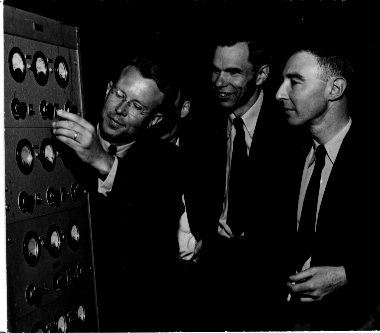
Ernest Lawrence, Glenn Seaborg and Robert Oppenheimer in
1946 at the control panel of the 184-Inch Cyclotron.
This was also a period of momentous individual achievement and the emergence of new leaders who forever changed the way things had been done. Charles Lindbergh's solo flight across the Atlantic ushered in the age of modern aviation; Babe Ruth's home-run heroics made baseball the national pastime; and Henry Ford's assembly lines opened the doors to mass production. In the arts, the literature of Scott Fitzgerald and Ernest Hemingway, the music of George Gershwin, the humor of Charlie Chaplin, and the paintings of Edward Hopper showed the way with their enduring brilliance. And in the arcane world of science, a 27-year-old physics professor in Berkeley began the work that would launch the modern era of multidiscipline national laboratories. His name was Ernest Orlando Lawrence.
Lawrence arrived at the University of California's Berkeley campus in the summer of 1928, having been wooed from a faculty position with Yale University by promises that included auxiliary connections to UC's Chemistry Department. Until then, the traditional practice of science was that physicists, chemists, and biologists worked within their own departments; seldom did the twain meet. Access to scientists and students from other disciplines, as well as to engineering staff, was critical to Lawrence's success as a researcher. It also set the pattern for the unique laboratory he created.
Inspired by a paper from Norwegian engineer Rolf Wideroe, Lawrence invented a unique circular particle accelerator, which he referred to as his "proton merry-go-round," but which became better known as the cyclotron. The first cyclotron was a pie-shaped concoction of glass, sealing wax, and bronze. A kitchen chair and a wire-coiled clothes tree were also enlisted to make the device work. Despite its Rube Goldberg appearance, the cyclotron proved Lawrence's point: whirling particles around to boost their energies, then casting them toward a target like stones from a slingshot is the most efficient and effective way to smash open atomic nuclei.
In his first year at Berkeley, Lawrence developed close relationships with two Cal professors outside of the Physics Department--chemist Gilbert Lewis and electrical engineer Leonard Fuller. From Lewis he would later get deuterons, the hydrogen isotope in heavy water that proved an invaluable "stone" for smashing atoms. With the help of Fuller, who was also vice-president of the Federal Telegraph Company, he obtained an 80-ton magnet for which the company had no use.
The accelerating chamber of the first cyclotron measured five inches in diameter and boosted hydrogen ions to an energy of 80,000 electron volts. Even as his assistants, M. Stanley Livingston and David Sloan, were constructing the 11-inch cyclotron -- a machine that would go on to break the one million electron volt (MeV) barrier -- Lawrence was dreaming of bigger things. The two gifts from his friends -- the magnet and deuterons to use as projectiles -- made possible his dream of constructing a cyclotron with an accelerating chamber some 27-inches in diameter and capable of reaching energies of nearly 5 MeV. But Lawrence would need more laboratory space to see the project through.
Lawrence had been recruited to Berkeley as part of the University's determination to build a physics department equal in stature to its celebrated Chemistry Department. Toward that end, Cal had opened Le Conte Hall in 1924 as one of the largest physics buildings in the world. Le Conte Hall could accommodate the 11-inch cyclotron in Room 329, but a 27-inch cyclotron with all of its trappings would be too much.
With backing from physicists and chemists alike, Lawrence procured from the University an empty building adjacent to Le Conte Hall called the Civil Engineering Testing Laboratory. In August 1931 the building was turned over to Lawrence and renamed the "Radiation Laboratory."
 |
The old Radiation Laboratory |
The 27-inch accelerating chamber of the Rad Lab's first cyclotron was soon replaced with a 37-inch chamber. By 1936, the 37-inch cyclotron, which could accelerate deuterons to 8 MeV and alpha particles to 16 MeV, had been used to create radioisotopes and the first artificial element, technetium. The design, construction, and operation of these increasingly larger cyclotrons involved a growing number of physicists, engineers, and chemists. (Lawrence was never certain as to whether his research should be called nuclear physics or nuclear chemistry.)
In recognition of its departure from the traditional academic lines of departmental science, the University officially established the Radiation Laboratory as an independent entity within the Physics Department on July 1, 1936. Henceforth, the new laboratory would be dedicated to the pursuits of "nuclear science" rather than accelerator physics.
Around this time, Ernest Lawrence also invited his brother John, a physician, to join the Lab and explore the use of radioisotopes in biology and medical research. The extension of the Rad Lab's history-making collaborations between physicists, chemists, and engineers to also include biologists led to the construction of the Crocker Laboratory. Built next to the Rad Lab, the Crocker Lab housed a cyclotron with an accelerating chamber that measured 60-inches in diameter.
The 60-inch cyclotron, which began operations in 1939, was described by visitors as a "truly colossal machine." Its magnet weighed 220 tons, prompting someone to joke that its neutrons would reach Chicago. But even as this huge machine was being put to use on experiments that would garner Nobel prizes for researchers Glenn Seaborg and Melvin Calvin, Lawrence was at work planning an even mightier giant. The next cyclotron that Lawrence envisioned would be so large no laboratory building on campus could contain it.
Fresh off his winning of the Nobel Prize in 1939 for the invention of the cyclotron, Lawrence made his push for a machine that would feature a magnet weighing 4,000 tons. Its accelerating chamber would measure 184 inches in diameter and would be capable of rocketing atomic particles to energies in excess of 100 MeV. To house such a machine and the experimental facilities that would go with it required a building 160 feet in diameter and almost 100 feet tall. A site for this structure was found atop a knobby promontory midway up the ridge behind campus. The promontory, known as Charter Hill, became the permanent site of Lawrence's Radiation Laboratory when construction of the 184-Inch Cyclotron (its design was altered to make it a "synchrocyclotron) was completed in 1946.
Lawrence died on Aug. 27, 1958, of chronic colitis at the age of 57. In his honor, the Radiation Laboratory was officially renamed the Lawrence Radiation Laboratory. In 1971, the laboratories in Berkeley and Livermore (which Lawrence also founded) were separated and the name Lawrence Berkeley Laboratory was born. In 1995, current Director Charles Shank requested that the laboratory be officially renamed the Ernest Orlando Lawrence Berkeley National Laboratory. This was done to fully honor the man whose cross-discipline team approach to research remains the hallmark of the laboratory he founded.

A Few Highlights in Lab History
- 1930 -- Ernest O. Lawrence invents the cyclotron.
- 1931 -- Radiation Laboratory opens on UC Berkeley campus.
- 1935 -- John Lawrence comes to Lab, begins field of nuclear medicine.
- 1936 -- First artificial element (technetium) created.
- 1940 -- Carbon-14, neptunium, and plutonium discovered.
- WWII -- Laboratory makes valuable contributions to Manhattan Project.
- 1946 -- Construction of 184-Inch Cyclotron completed.
- 1947 -- Melvin Calvin uses carbon-14 as tracer to study photosynthesis.
- 1948 -- Luis Alvarez invents proton linac.
- 1950 -- "Anger cameras" invented.
- 1953 -- Donald Glaser invents bubble chamber.
- 1954 -- Bevatron completed.
- 1955 -- Antiproton discovered at the Bevatron.
- 1957 -- SuperHILAC commissioned.
- 1958 -- Ernest O. Lawrence dies; Lab renamed Lawrence Radiation Laboratory.
- 1960 -- Luis Alvarez discovers resonance states.
- 1962 -- 88-Inch Cyclotron commissioned.
- 1964 -- George Pimentel invents chemical laser.
- 1971 -- Lawrence Berkeley and Livermore Laboratories separate.
- 1974 -- J/psi particle and element 106 (seaborgium) discovered.
- 1976 -- Charmed mesons discovered.
- 1978 -- Dynamic Positron Emission Tomography is invented.
- 1979 -- Segmented mirror designed for Ten Meter Telescope.
- 1980 -- Mina Bissell proposes ECM theory on breast cancer; superwindows developed.
- 1982 -- National Center for Electron Micropscopy opens.
- 1984 -- Luis Alvarez proposes theory of dinosaur extinction; Tom McEvilly successfully predicts 1993 Parkfield earthquake.
- 1987 -- Lab gets Human Genome Center.
- 1988 -- Material harder than diamond predicted; first direct image of DNA double helix created.
- 1990 -- First genetic links to atherosclerosis identified.
- 1991-- SNO Collaboration begins.
- 1992 -- COBE satellite image of primordial universe supports Big Bang theory.
- 1993 -- ALS commissioned.
- 1994 -- Top quark discovered; STAR and B-factory approved.
- 1995 -- National Energy Research Scientific Computing (NERSC) Center acquired; Gammasphere dedicated.
- 1995 -- Lab renamed Ernest Orlando Lawrence Berkeley National Laboratory.
|
|
|
 Premier
Premier
 Précédent
2 à 5 de 5
Suivant
Précédent
2 à 5 de 5
Suivant
 Dernier
Dernier

|
|
|
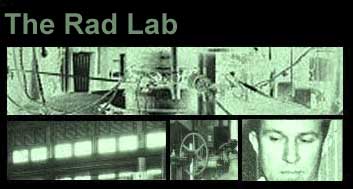
  |
The more energetic the particles produced by an accelerator, the more interesting physics they can create in the laboratory. Lawrence did not remain satisfied with the million-volt protons provided by his eleven-inch cyclotron, but hoped to increase the energy by a factor of ten or more. Higher energies required bigger magnets and faster oscillators. It also demanded more money. It was not a good time to raise money for research, as the U.S. reached the depths of the Great Depression. Universities in general suffered less than other segments of society. Still, in 1933 the physics department of the University of California at Berkeley had to cut its research budget by a third and impose an austerity program of lower salaries and fewer teaching assistants.
|
  |
|
|
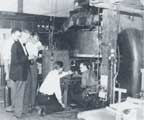
"Cyclotroneers" encouraging a beam in the 27-inch cyclotron.
|
Lawrence was obliged to seek new funding sources. He was as adept at fundraising as at building new devices and despite the grim Depression environment, he found donors for his next machine. One patron was the Research Corporation, a company that filed patents on behalf of university professors and plowed the proceeds back into academic research. Another was the Chemical Foundation, set up by the federal government to administer the thousands of German patents seized in World War I. The Research Corporation urged Lawrence to take a patent on his cyclotron. Lawrence at first resisted--like many prewar scientists, he did not think of academic research as a money-making business. But when he learned that an engineer at Raytheon had applied for a patent on a similar circular accelerator, the fear of an industrial monopoly made him file an application for the cyclotron (the patent was granted in 1934).
|
|

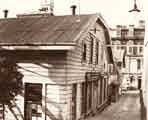
The original Radiation
Laboratory on the Berkeley Campus.
|
The university provided the remainder of the funds and a building to house the new machine. In August 1931 an old civil engineering building was made available for Lawrence, which came to be called the Radiation Laboratory. The building housed a new 27-inch cyclotron, with an 80-ton magnet originally built to power a transatlantic radio link in World War I. Lawrence acquired the magnet at a discount as war surplus. By September 1932 the cyclotron was accelerating protons up to 3.6 million electron-volts.
|
|
|
 |
|
Ernest Lawrence at the controls of the 37-inch cyclotron about 1938.
|
|
In what became typical for Lawrence, he was already planning his next machine before the current one started working. In 1937 he had a 37-inch cyclotron operating, followed two years later by a 60-inch device. To build the succession of machines Lawrence solicited $550,000 worth of expenses and equipment for his laboratory between 1931 and 1940. Donors included the state of California through the university; private philanthropies, notably the Macy and Rockefeller Foundations; and the federal government through the National Cancer Institute. Industrial firms donated equipment.
"The trade of a �cyclotroneer' is one which has experienced no depression."
—A student of Lawrence in 1938
|
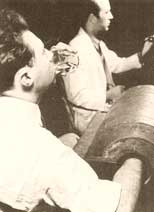
Rad Lab staff demonstrated the potential application of radioactive isotope tracers in public lectures. A volunteer would drink a "radiosodium cocktail" of salt water containing radiosodium, and trace its progress through the body with Geiger counters. |
The federal government also provided support through two New Deal agencies, the Works Progress Administration and the National Youth Authority, which put electricians, machinists, carpenters, and other technical assistants to work in the Rad Lab on the government's payroll. The Depression also produced a steady supply of physicists willing to work for nothing in order to learn cyclotronics. From 1933 to 1940 the Rad Lab had several graduate and postdoctoral students paying their own way at the lab. They helped the Rad Lab staff grow from a total of ten in 1932 to sixty in 1939.
Lawrence found another important way to elicit funds—appeals to biomedical applications. Lawrence's colleague David Sloan had put his linear accelerator to work at the university's medical school as a powerful source of X-rays. The example encouraged Lawrence to promote similar applications of the cyclotron, such as the production of radioactive isotopes, which had medical uses in attacking cancers and as "tracers" in research on metabolism, and beams of neutrons, which promised to rival the utility of X-rays.
Philanthropies at the time donated far more money to medicine, public health, and biology than to physics. In 1933 the Rockefeller Foundation, a dominant supporter of American fundamental research in years between the wars, decided to concentrate on applications of the methods of physics and chemistry to biology and medicine. But Lawrence did not just give lip service to biomedicine. He believed in the promise of particle accelerators as a possible weapon against cancer. In 1937 Lawrence brought his mother, diagnosed with inoperable cancer, to San Francisco for treatment with Sloan's X-ray tube, after which her condition dramatically improved.
|
|
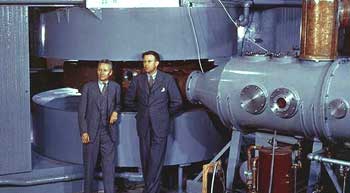
Posing with the newly completed 60-inch cyclotron in the Crocker Laboratory are (left to right) Donald Cooksey and Ernest Lawrence.
|
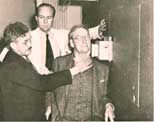
Robert Stone and
John Lawrence, Ernest's
brother, treat a patient with neutrons from the 60-inch cyclotron. |
"I must confess that one reason we have undertaken this biological work is that we thereby have been able to get financial support for all of the work in the laboratory. As you know, it is much easier to get funds for medical research."
—Lawrence to Niels Bohr, 1935
|
|
|
|
|
|


Different cyclotron size: a) Lawrence ́s first one, b) Venezuela First one (courtesy of Dorly Coehlo), c) Fermi National Laboratory at CERN. And size matters, and Cyclotrons win as best hospital candidates due to Reactors are bigger, harder and difficult to be set in a hospital installation. Can you imagine a nuclear reactor inside a health installation? Radiation Protection Program will consume all the budget available. Size, controlled reactions, electrical control, made cyclotrons easy to install, and baby cyclotrons come selfshielded so hospital don ́t need to spend money in a extremely large bunker. Now on, we are going to talk about our first experience with the set up of a baby cyclotron for medical uses inside the first PET installation in Latin America. “Baby” means its acceleration “D” diameters are suitable to be set inside a standard hospital room dimensions, with all its needs to be safetly shielded for production transmision and synthetized for human uses for imaging in Nuclear Medicine PET routine. When we ask why Cyclotrons are better than reactors for radioisotopes production to be used in Medicine, we also have to have in mind that they has: 1. Less radioactive waste 2. Less harmful debris
https://www.researchgate.net/figure/Different-cyclotron-size-a-Lawrence-s-first-one-b-Venezuela-First-one-courtesy-of_fig3_221906035

|
|
|
 Premier
Premier
 Précédent
2 a 5 de 5
Suivant
Précédent
2 a 5 de 5
Suivant
 Dernier
Dernier

|

